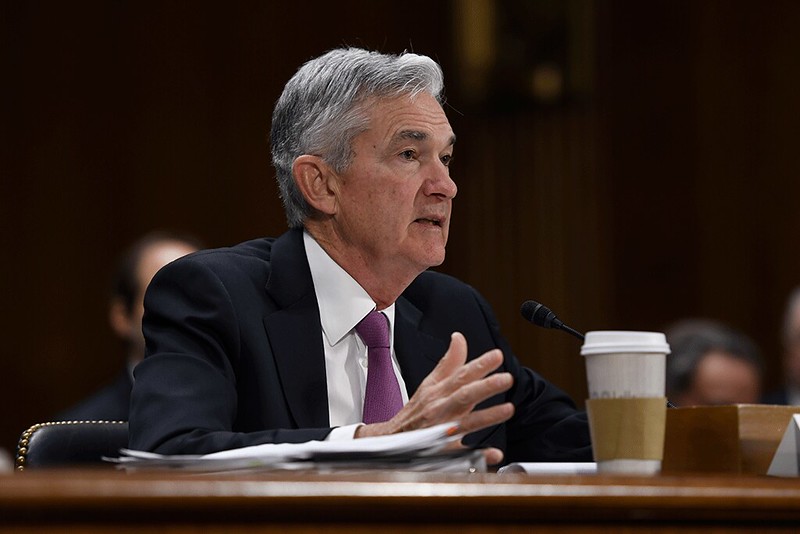
Chair Powell presents the Monetary Policy Report to the Senate Committee on Banking, Housing, and Urban Affairs. February 26, 2019. Photo courtesy of the Federal Reserve.
Inflation, as measured by the less-than-reliable Consumer Price Index, has slowed since earlier in the year, though it remains above the Federal Reserve’s “target” level of 2%. Despite the slowdown, the most recent annual inflation number released this week was 3.2%, a slight increase from June’s 3% reading. Will these lower numbers be enough to convince the Fed to stop raising rates, or will it pursue further increases in the Fed Funds Rate it has signaled earlier this year? Amara Omeokwe, Nick Timiraos and Christian Robles report for The Wall Street Journal:
Price pressures continued cooling last month, fresh inflation figures showed, likely deterring the Federal Reserve from raising interest rates at its September meeting.
The consumer-price index, a measure of goods and services prices across the economy, rose a mild 0.2% in July, the same as in June, the Labor Department said Thursday. Core prices, which exclude volatile food and energy categories, also increased just 0.2% in both months, extending a broader slowdown in price pressures.
The figures led to 3.2% annual inflation in July, up from 3% in June. Annual core inflation ticked down to 4.7% in July from June’s 4.8%.
The pickup in annual inflation was influenced by what happened in July of 2022, which serves as the basis for comparison. Economists don’t expect the annual rate of inflation to slow much more this year in part because of so-called base effects.
U.S. stocks edged higher following the positive inflation news. The S&P 500 gained less than 0.1%. The Dow Jones Industrial Average added 0.2%, and the Nasdaq Composite rose 0.1%. The benchmark 10-year U.S. Treasury yield inched up to 4.081%.
Fed officials focus on core inflation because they see it as a better predictor of future inflation than the overall inflation rate.
The core CPI, in particular, adds to recent data that calls into question whether the central bank will need to raise rates again this year, as most officials had projected in June.
The new numbers lowered the three-month annualized rate of core inflation to 3.1%, the lowest such reading in two years, from 5% in May.
“My God, that’s incredible,” said Laurence Meyer, a former Fed governor. “There’s absolutely no question that core inflation has turned the corner faster” than the Fed anticipated.
Even before Thursday’s report, a handful of Fed officials said the central bank could be close to pausing interest-rate increases after raising them at 11 of the past 12 central bank meetings. The Fed raised rates most recently last month to a range between 5.25% and 5.5%, a 22-year high.
In June, most officials projected they would raise rates at least to a range between 5.5% and 5.75% this year, but inflation has slowed markedly in the two months since they made those projections. Their next meeting is Sept. 19-20.
“I believe we may be at the point where we can be patient and hold rates steady,” Philadelphia Fed President Patrick Harker said in a Tuesday speech.
Read more here.
